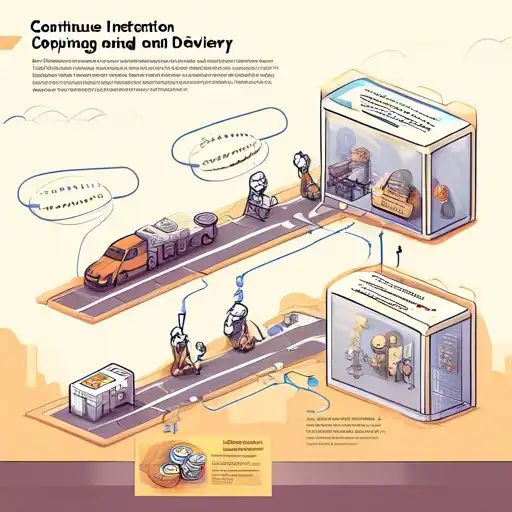What is Continuous Integration and Delivery?
Continuous Integration (CI) and Continuous Delivery (CD) are pivotal practices in modern software development, aimed at improving the speed and quality of software releases. CI/CD automates the integration of code changes from multiple contributors into a single software project, ensuring that the software can be reliably released at any time.
The Core Principles of CI/CD
At the heart of CI/CD are several core principles designed to streamline development processes. These include frequent code integration, automated testing, and the ability to deploy updates quickly and efficiently. By adhering to these principles, teams can reduce integration problems and deliver updates to users faster.
Benefits of Implementing CI/CD
Implementing CI/CD offers numerous benefits, including:
- Reduced manual errors through automation
- Faster time to market for new features and fixes
- Improved collaboration among development teams
- Higher quality software through continuous testing
These advantages make CI/CD an essential strategy for teams looking to stay competitive in today's fast-paced software development landscape.
How to Get Started with CI/CD
Getting started with CI/CD involves several key steps:
- Choose the right tools for your project, such as Jenkins, Travis CI, or GitHub Actions.
- Set up a version control system to manage code changes effectively.
- Automate the build and test processes to ensure code quality.
- Implement deployment automation to streamline releases.
By following these steps, teams can begin to realize the benefits of CI/CD and improve their software development lifecycle.
Common Challenges and Solutions
While CI/CD offers many benefits, teams may encounter challenges such as resistance to change, toolchain complexity, and maintaining test coverage. Overcoming these challenges requires a commitment to continuous learning and improvement, as well as selecting tools that fit the team's specific needs.
For more insights into optimizing your development process, explore our guide on DevOps best practices.
Conclusion
Continuous Integration and Delivery represent a transformative approach to software development, enabling teams to deliver high-quality software more efficiently. By understanding and implementing CI/CD practices, organizations can achieve faster release cycles, improved collaboration, and a stronger competitive edge.
Ready to take your development process to the next level? Dive deeper into automation in DevOps to discover how automation can further enhance your CI/CD pipeline.
